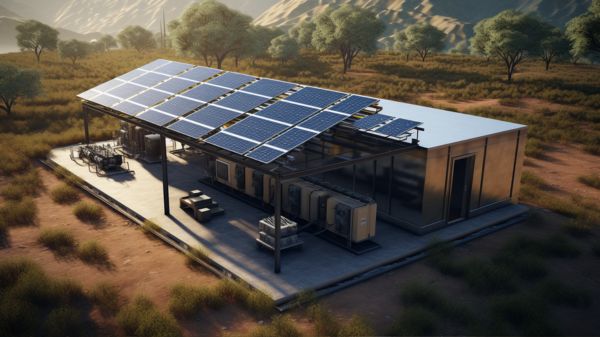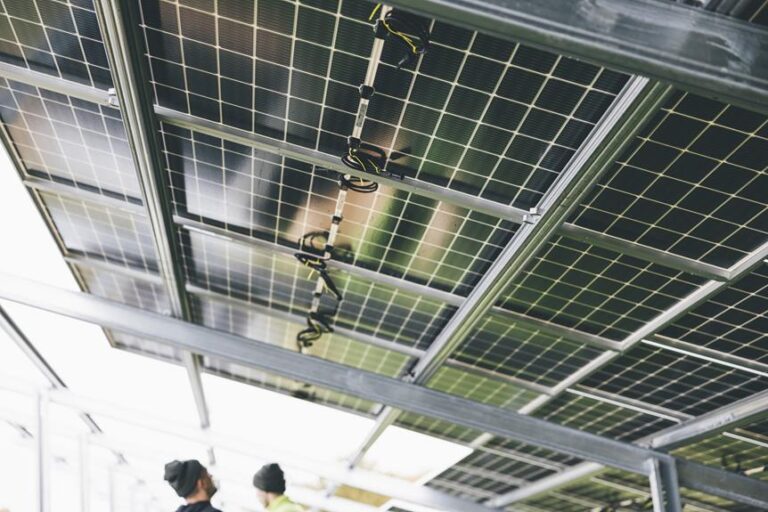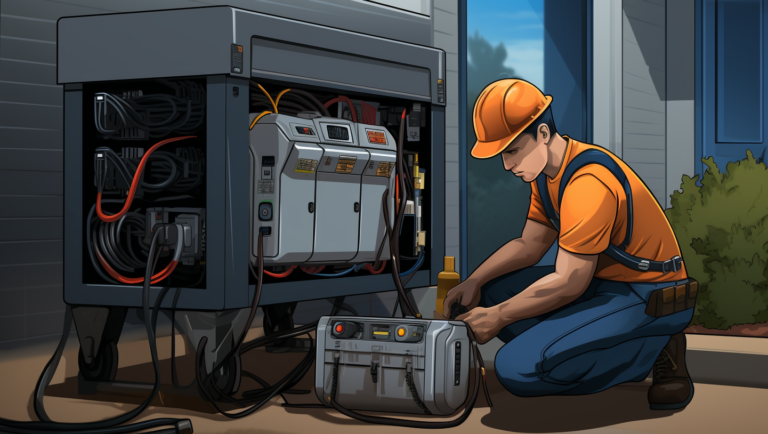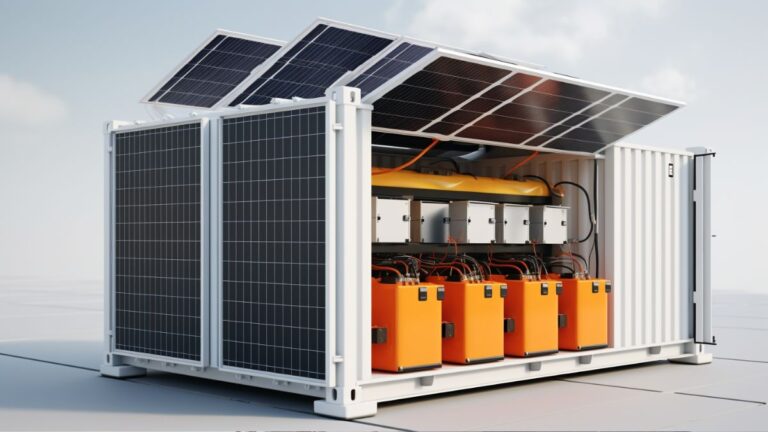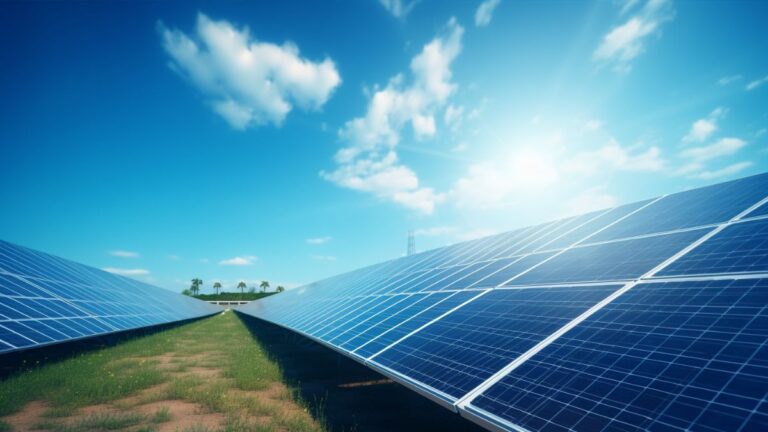5 Best Strategies for Efficient Solar Power System Design
Are you ready to dive into the world of efficient solar power system design? Get ready to embark on a journey filled with valuable strategies that will revolutionize your approach.
Like a skilled architect crafting a masterpiece, you will learn how to analyze and evaluate sites, place solar panels optimally, select efficient inverters, integrate battery storage, and implement effective monitoring and maintenance techniques.
Join us as we unravel the secrets to designing a solar power system that will make you feel like part of a sustainable community.
Key Takeaways
- Thoroughly assess and evaluate your site for optimal solar power system design, considering geographical factors and conducting a shading analysis.
- Position solar panels in optimal locations that receive the most sunlight throughout the day and adjust the tilt angle to match your site’s latitude for correct sunlight capture.
- Choose the right inverter that is compatible with local grid connection requirements and has a capacity that matches or slightly exceeds the maximum power output of solar panels.
- Integrate battery storage to enhance system efficiency, store excess energy for use during low solar production periods, and choose batteries with a long lifespan for maximum return on investment.
Site Analysis and Evaluation
Have you thoroughly assessed and evaluated your site for optimal solar power system design?
When it comes to harnessing the power of the sun, a careful analysis of your site’s geographical factors and shading analysis is crucial.
Before you install solar panels, it’s important to understand the unique characteristics of your location. Geographical factors such as latitude, longitude, and elevation can affect the amount of sunlight your site receives throughout the year.
Additionally, conducting a shading analysis will help identify any obstructions, such as trees or buildings, that may cast shadows on your solar panels.
Optimal Solar Panel Placement
To ensure the most efficient solar power system design, consider the optimal placement of your solar panels by carefully evaluating your site’s geographical factors and conducting a shading analysis. A shading analysis helps determine the areas of your site that receive the most sunlight throughout the day, allowing you to position your solar panels in the optimal locations for maximum energy production. Additionally, tilt angle optimization plays a crucial role in maximizing solar panel efficiency. By adjusting the tilt angle to match your site’s latitude, you can ensure that your panels are angled correctly to capture the most sunlight. This table provides a visual representation of the shading analysis and tilt angle optimization for your reference:
| Time of Day | Shading Analysis | Tilt Angle |
|---|---|---|
| Morning | Low | 30° |
| Midday | Minimal | 45° |
| Afternoon | Moderate | 30° |
| Evening | Low | 15° |
| Night | None | 0° |
Efficient Inverter Selection
Choose the right inverter to maximize the efficiency of your solar power system. The inverter is an essential component that converts the direct current (DC) generated by your solar panels into alternating current (AC) that can be used to power your home or business.
Here are three key factors to consider when selecting an efficient inverter:
- Grid Connection: Ensure that the inverter you choose is compatible with your local grid connection requirements. Different countries and regions may have specific regulations and standards for grid-tied solar systems.
- System Sizing: Consider the size of your solar power system when selecting an inverter. The inverter should have a capacity that matches or slightly exceeds the maximum power output of your solar panels to ensure optimal performance and efficiency.
- Efficiency Ratings: Look for inverters with high efficiency ratings. Higher efficiency means less energy loss during the conversion process, resulting in increased overall system efficiency and improved energy production.
Battery Storage Integration
Integrate battery storage to enhance the efficiency of your solar power system. By adding battery storage to your system, you can store excess energy generated during the day and use it during periods of low solar production, such as at night or during cloudy days. This allows you to maximize self-consumption and reduce reliance on the grid.
To help you understand the benefits of battery storage integration, here’s a table outlining key considerations:
| Consideration | Description |
|---|---|
| Battery Lifespan | It is important to choose batteries with a long lifespan to maximize the return on investment. Look for batteries with a warranty of at least 10 years. |
| Grid Connection | A grid-connected system allows you to sell excess energy back to the grid and draw power when needed. This provides flexibility and ensures a reliable power supply. |
Integrating battery storage into your solar power system not only increases efficiency but also provides energy independence and resilience. It allows you to make the most of your solar energy and reduce your reliance on the grid, ultimately saving you money and contributing to a greener future.
Monitoring and Maintenance Techniques
How can you ensure the optimal performance and longevity of your solar power system through effective monitoring and maintenance techniques? Here are three key strategies to help you achieve this:
- Regular Performance Monitoring: Implement a comprehensive monitoring system that tracks the performance of your solar power system in real-time. This allows you to identify any issues or inefficiencies promptly and take appropriate action.
- Remote Troubleshooting: Utilize remote monitoring technology to diagnose and troubleshoot any problems that may arise in your solar power system. This enables you to identify and address issues without the need for physical intervention, saving time and resources.
- Performance Optimization: Continuously analyze the data collected from your monitoring system to identify opportunities for system optimization. By fine-tuning various components of your solar power system, such as panel orientation or inverter settings, you can maximize its performance and energy output.
Conclusion
Designing an efficient solar power system requires careful consideration of various factors.
By conducting a thorough site analysis and evaluation, optimizing solar panel placement, selecting the right inverter, integrating battery storage, and implementing effective monitoring and maintenance techniques, you can maximize the system’s performance.
Just like a well-orchestrated symphony, each component must harmonize perfectly to create a powerful and sustainable energy solution.
With the right strategies in place, your solar power system will shine bright, providing clean and renewable energy for years to come.
